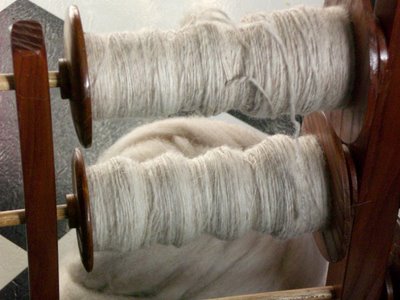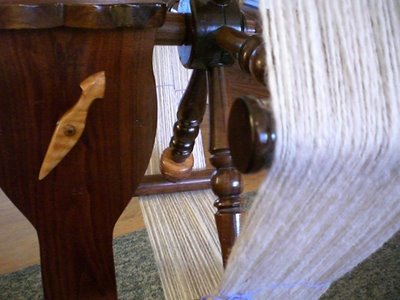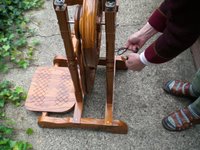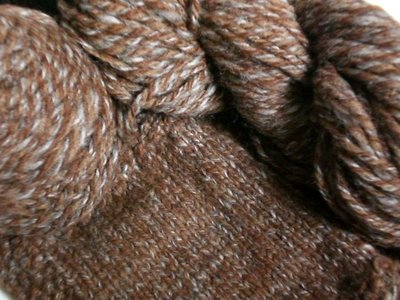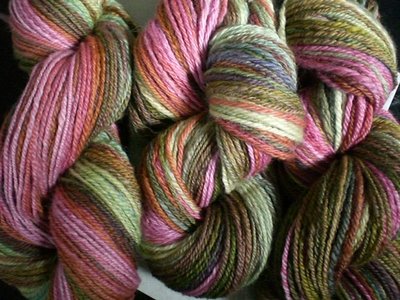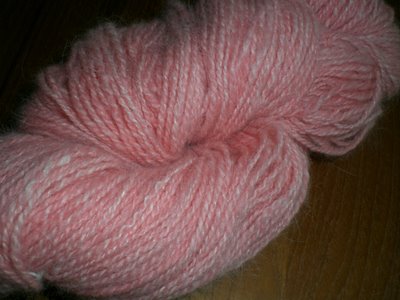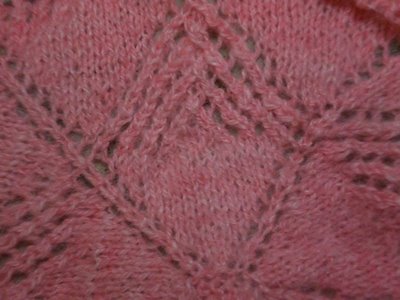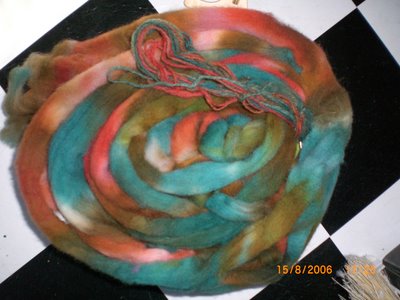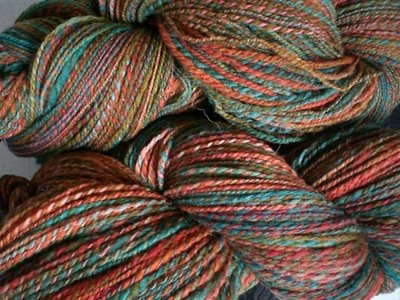 Occasionally Peggy and I are asked about our wheels when we've taken them to a spin-in where other spinners haven't seen one before. We've started a yahoo group for owners of these wheels to post photos and chat (the curious and spinners interested in acquiring a Betty Roberts wheel are welcome to visit) and we enjoy showing our wheels to people in person.
Occasionally Peggy and I are asked about our wheels when we've taken them to a spin-in where other spinners haven't seen one before. We've started a yahoo group for owners of these wheels to post photos and chat (the curious and spinners interested in acquiring a Betty Roberts wheel are welcome to visit) and we enjoy showing our wheels to people in person.
Not many people know about Betty Roberts, mostly because she started making wheels before the PC was a staple of life and now that she's in her 70's she just doesn't want to do her business on-line. So, here's a brief history:
Every small shop spinning wheel maker has her own designs. Betty Roberts has been making wheels since the 1970's, when she was Betty Williams, and her designs have evolved through several permutations, many when she and Lloyd Roberts married in the early '80's and he joined her in the workshop. Betty says that Lloyd believed in making a thing 'sturdy', and many of the wheels from back then had steel pegs to hold the spools on the lazy kate, thick wood where thinner would have done, metal nuts and bolts instead of simple screws. And these wheels weighed a lot. After Lloyd died Betty gradually lightened up her designs
and made her wheels more portable. Peggy and I don't have any problem traveling with them in the Mazdaratti.
Betty has the mind of an engineer and the heart of an artist; her creations have function and form. The wheel above is a 'double wheel double drive' style, made of Russian Olive (a 'volunteer' tree common in eastern Washington State) and dried flowers covered with resin. She also includes mushrooms, butterflies, honey bees and other items local to her area, The Okanogan.
On my wheel there are two drive bands at work at all times ~ one thick black band between the two wheels and a lighter weight cotton band between the top wheel and the flier. The treadle drives the lower wheel, the lower wheel drives the top wheel with the black band and the top wheel drives the flier with the white band. There are also three whorls: one at the flier, one at the lower wheel and one on the top wheel. This gives me 8 speeds. I haven't checked out the ratios on all speeds yet, in spite of owning this wheel for almost two years. Betty helped me figure out one ratio and it was 31/1. That's fast. That's what an accelerated wheel design will do for you!
Those who have never seen a wheel such as mine may well wonder how the heck one swaps out the long black drive band for the shorter one and I understand that - so did I. The two 'cams' on the top of the frame don't have a thing to do with it though, they are there to increase or decrease tension on the black drive bands only. The spinner (me) removes the top wheel to swap out the shorter drive band for the longer one, and vise versa. At first I was more than a little intimidated by the process, but soon after getting my wheel home I discovered that it was a simple process.
on the top of the frame don't have a thing to do with it though, they are there to increase or decrease tension on the black drive bands only. The spinner (me) removes the top wheel to swap out the shorter drive band for the longer one, and vise versa. At first I was more than a little intimidated by the process, but soon after getting my wheel home I discovered that it was a simple process.
Here's a series of photos showing how it's done and it probably took me three minutes, including taking the pictures. The small band is on the small upper whorl and the small bottom whorl and I changed to the longer band and put it on the large upper and lower whorls. Simple. I then put them back as they were because I was in the middle of a project, and that was easy, too.
 First take the white drive band off the top wheel and the flier.
First take the white drive band off the top wheel and the flier.
Then pop the thicker black drive band off the lower wheels'
small whorl and the upper wheels' small whorl.

 Grasp top wheel and pull out of the base
Grasp top wheel and pull out of the base.



 These are the two lengths of heavy drive bands
These are the two lengths of heavy drive bands
made from parachute cording.  The longer of the two is now placed on the outside of the lower wheel and the larger of the two upper wheel whorls. Replace the top wheel onto the frame, adjust the black band onto the two whorls.
The longer of the two is now placed on the outside of the lower wheel and the larger of the two upper wheel whorls. Replace the top wheel onto the frame, adjust the black band onto the two whorls.
 Snow on February 28th???? ACK!
Snow on February 28th???? ACK!




